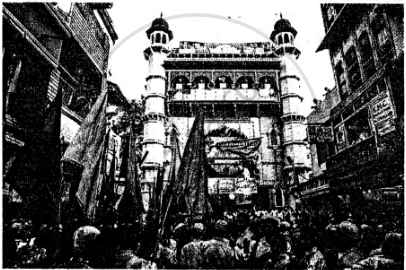Advertisements
Advertisements
Question
This is the picture of a monument associated with the founder of a religious reform movement in India.

Mention any four important religious principles of that movement, which are common to the principles of the Bhakti Movement.
Solution
(a) There is only one God.
(b) Everyone is equal in the eyes of God.
(c) God can be reached through love and devotion and total surrender to His will and not through rites, rituals, and idol worship.
(d) Everyone should lead a pure life.
RELATED QUESTIONS
Fill in the blank:
The Bhakti and Sufi movements brought about an _______ among the Hindus and Muslims.
Answer the following question:
What were Sufi's teachings?
Fill in the blanks:
As the spirit of ________and __________developed between the Hindus and the Muslims, two liberal religious _____movements took shape in the Medieval Period. They were the _____and ____movements.
Fill in the blanks:
The Bhakti Movement began in ____ India in the ____-century CE and became a popular movement before the arrival of the ____.
Choose the correct answer:
The Sufis were a group of ______ mystics.
Choose the correct answer:
The Bhakti saints drew their inspiration from the Bhagwad Gita and the________.
Answer the following question in one or two words/sentences:
What are silsilas?
Answer the following question briefly:
What effect did the Bhakti and Sufi movements have on Indian society?
This is the picture of a monument associated with the founder of a religious reform movement in India.

Identify the monument.
This is the picture of a monument associated with the founder of a religious reform movement in India.

Name any two religious reformers of the Bhakti Movement.
